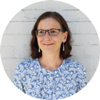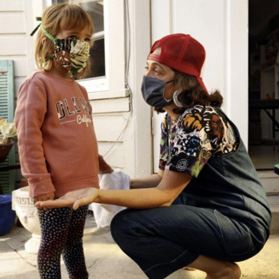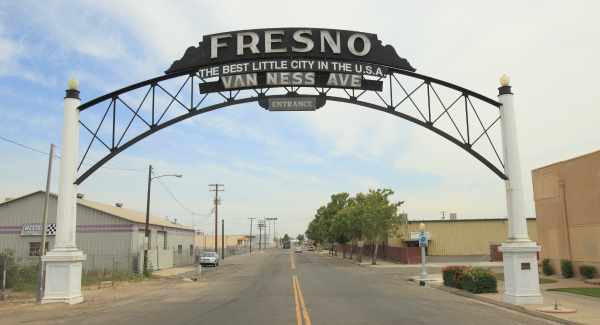|
|
|
|
|
Exploring the connectedness of health in our communities and imagining a better future
|
| September 22 2020 | Issue #4 |
|
Welcome to Intersections, Blue Shield of California Foundation’s newsletter that curates insights in health and health equity in California and beyond.
In each edition, we bring you a compilation of powerful and thought-provoking reads in health. Our goal is to broaden the definition of health, shine a light on the various dimensions of health inequity, elevate human stories, and explore how we might solve future challenges together.
|
|
This month all of our selections deal with equity, a persistent theme in health and especially timely now as fires and poor air quality worsen existing inequities across our state. Our selected stories highlight some of the inequities Californians and people across the country experience in many spheres of life that are demanding our attention today. Besides the fires, these include the interlocking issues of housing and health, the inequities that essential workers face during the COVID-19 pandemic, and how Black men’s experience with the police and incarceration can impact relationships within their own families.
We recognize equity as core to health. And we are not alone. As sobering as the news is lately, there is also abundant hope in the organizing, advocacy, and seeking of solutions taking place in myriad communities. There is a groundswell of energy for tackling these long-standing problems. As a Foundation, we are investing in those efforts. I hope that you will find these selected readings informative and motivating.
On a personal note, I am delighted to join the Foundation this month. I have worked in health communications for many years, first as a journalist and most recently for the last 12 years at the San Francisco Department of Public Health. There, I led communications about many issues that the Foundation addresses, such as COVID-19, equity, prevention, and improving the health of the most vulnerable residents. I am looking forward to gaining new perspective and experiences, joining with the Foundation team, our partners, grantees and all of you who are part of this work.
We want this newsletter to be a two-way conversation. So if you have suggestions for what we should be reading or including, please drop us a line at bscfpublicaffairs@blueshieldcafoundation.org.
|

|
Rachael Kagan
Director of Communications & Public Affairs |
|
|

|
| For many Californians, clean air and healthy living conditions are not equally distributed |
|
|
Californians living in the Central Valley recently found themselves juggling multiple crises—dangerous fires and smoke, record-high temperatures, and the still-spreading virus—all at once.
|
|
|
|
|
|
“What we see with the heat wave, the wildfires, the COVID pandemic, is a compounding of disasters,” said Michael Mendez, a professor of environmental policy at the University of California, Irvine, in a piece by CalMatters about these colliding crises. “And with that compounding of disaster we see cascading health and economic impacts to migrant communities and other low-income communities of color.”
As the CalMatters story details, the Central Valley had some of the state’s worst air quality even before fire season. It is surrounded by freeways and agricultural fields, and spattered with oil and gas production. Mountain ranges around the valley also trap soot and smog-forming pollutants.
Outside of the valley and across the state, Californians are battling the effects of the fires. KQED tells the story of 11-year-old Ta’Kira Dannette Byrd, who was diagnosed with asthma at age five and lives with her mother and two brothers in a low-income housing development in Vallejo.
The family already has made several frightening asthma-related trips to the E.R.—and they are not alone in their struggle. Black children like Ta’Kira are disproportionately impacted by asthma and are more likely to be hospitalized for it, especially in low-income neighborhoods. As John Balmes, professor of medicine and environmental health sciences at UCSF and UC Berkeley told KQED, this is because of higher exposure to air pollution, but also indirect factors including discrimination, poor housing, and poverty.
Blue Shield of California Foundation’s partnership with the Public Health Institute’s Regional Asthma Management and Prevention Program (RAMP) aims to reduce the burden of asthma with a focus on health equity. Its work has led to policy solutions across housing, health care, schools, and the environment—generating positive outcomes for low-income Californians well beyond asthma.
|
|
|
|
|
| Two perspectives on being an essential worker in California |
|
|
|
COVID-19 has taught us that the health of families, neighborhoods, communities and our nation depends on essential workers. Since the start of the pandemic, we’ve seen newsfeeds full of delivery drivers, grocery store employees, and—in particular—workers who care for children and elderly people risking their health to keep others safe.
|

(Photo credit: Carolyn Cole, Los Angeles Times) |
|
|
|
|
In a recent LATimes op-ed, Joe Lumarda, board chair of the California Wellness Foundation and a senior vice president at Capital Group, reflects on his parents’ lives as essential workers.
His parents were employees of the Sisters of St. Joseph of Orange and beloved members of an extended family, not as workers, but as essential members of a human community. After decades of service, the convent continued to support his parents in their retirement. The Mother Superior told Lumardo, “You should know that you will never have to worry about your parents.”
This is a dramatic contrast from the conditions of most essential workers today. Across the country, essential workers are paid far less than average wage. In California, they earn $3,170 per month. In a state where the median monthly rent for a studio apartment is $1,950, they expend much of that on housing. A Kaiser Family Foundation study found that one in four essential workers reported difficulty meeting basic household needs. Their conditions and challenges have only been compounded by COVID-19.
Consider the childcare field, which is often staffed by women, immigrants, people of color, and emerging entrepreneurs. Their careers have been upended, and, in many cases, ended by the pandemic. Kirsten Hove, a childcare provider in San Francisco told the LATimes “I really had no idea how bad this pandemic would be. I thought we’d go shelter in place and it would be over and we’d reopen again.” Her business, which her mother started 30 years ago, has closed two of its three locations. Even before COVID-19, providers were struggling to make ends meet and 60% of Californians lived in childcare deserts. Today, after the closure of over 1,200 childcare centers, that percentage is even higher.
|
|
|
|
|
| Workers’ voices essential to create an inclusive economy |
|
|
|
|
|

Fresno is the fifth most populous city in California, the largest metro area in the Central Valley, and it faces some of the greatest economic and racial disparities in the region. Fresno residents are struggling with the rising cost of living alongside housing insecurity, limited employment opportunities, and multiple threats to health and safety.
New America, in partnership with Fresno’s DRIVE Initiative, is working to change this by ensuring more inclusive economic growth for Fresno’s diverse and vibrant communities. They began by conducting human-centered research grounded in the understanding that workers, as the “end users” of public policy, are essential voices in the development of solutions for economic growth and inclusivity. Through a series of interviews, New America was able to better understand the struggles and lived experiences of Fresno residents in their own words. The workers spoke of economic precarity due to lack of stable, well-paying jobs and automation, housing insecurity, and health issues stemming from poverty that affect both their mental and physical health. Most interviewees also reported experiencing racial discrimination, often limiting their opportunities for economic mobility.
Through their research, New America developed recommendations - including ensuring that workers are able to change industries in response to automation by investing in the development of transferable skills. The thoughtful recommendations highlight the need to ensure that community voices influence policy in order to create a more inclusive, equitable, and prosperous Fresno for all of its residents.
|
|
|
|
|
| The far-reaching consequences of incarceration and policing of Black fathers |
|
|
|
|
|
The over-policing and incarceration of Black men not only impacts their lives, but the lives of their children, the safety of their partners, and the strength of their communities.
Deadric T. Williams and Armon Perry, a sociologist and a social worker, co-authored a piece in The Conversation that shows us just how much families and communities suffer as a result of the over-policing of Black men. They cite a previous study they undertook that shows fathers who experienced police stops were more likely to report conflict or lack of cooperation in their relationships with their children’s mother. Given that one in four Black men states that he has been treated unfairly by police within the last month, the negative repercussions are potentially widespread. Frequent interaction with law enforcement generates undue stress and strain for Black men—and, knowing that individuals within families are inextricably linked, this stress can spread to children and affect the mother-father relationship.
Additional research shows that one in nine Black children has had a parent in prison. The resulting separation has negative implications for former inmates’ involvement with their children and their ability to reintegrate with their families and communities. Parental incarceration is linked to a number of adverse child outcomes, resulting in Black children being disproportionately at risk for developmental challenges and long-term physical and mental health conditions as a result of the over-incarceration of Black men. Black mothers of children with incarcerated fathers also report lower quality relationships and higher rates of domestic violence.
|
|
|
|
This month at Blue Shield of California Foundation
- As the country begins to reopen, how do we create a healthier future of work? In this essay, Foundation Senior Program Officer Rachel Wick shares insights on how we can improve the economic security and mobility of Californians as a pathway to a future of work that values health and family life.
- We’re proud to announce nearly $11 million in grants this quarter to help break the cycle of domestic violence, support childcare workers, and strengthen community efforts for health equity.
- In support of our partners at CHANGE Philanthropy, we are spreading the word about the “Diversity Among Philanthropic Professionals” survey. As funders turn to focus on equity, they can start from within—sign up to participate.
- We're excited to announce that Ana Jackson has joined the Foundation as chief evaluation and data strategy director. Ana will lead the design and implementation of systems to evaluate and measure the impact of the Foundation’s grantmaking programs.
|
|
|
|
|






 Arts and Entertainment
Arts and Entertainment Business and Industry
Business and Industry Computer and Electronics
Computer and Electronics Games
Games Health
Health Internet and Telecom
Internet and Telecom Shopping
Shopping Sports
Sports Travel
Travel More
More